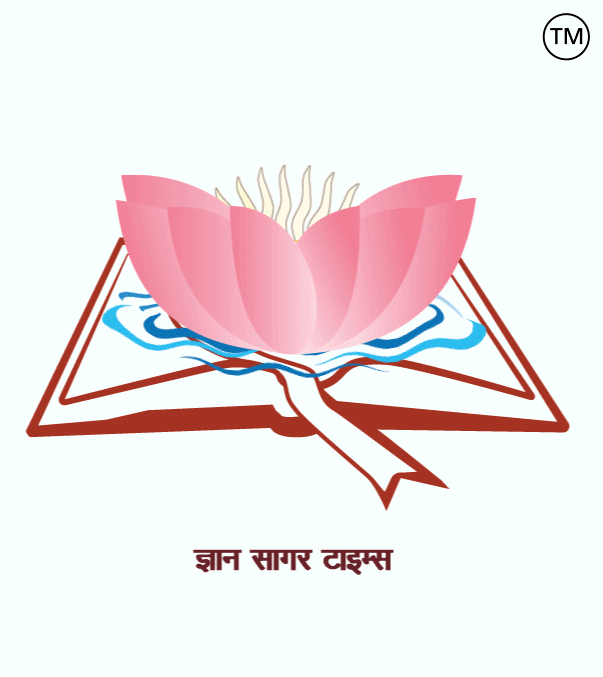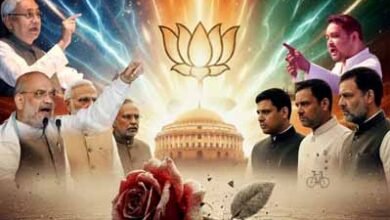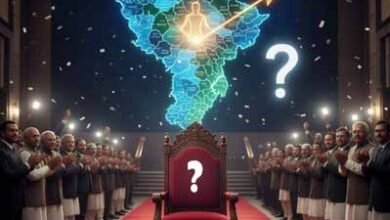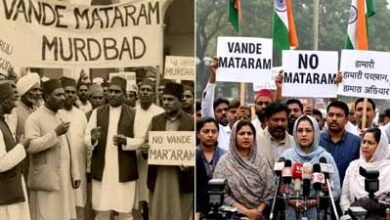
सभ्यता और संस्कृति में विकृति: डिजिटल दुनिया…
डिजिटल संसार एक ‘दर्पण’ भी है और एक ‘छलनी’ भी। यह हमारी संस्कृति को विकृत भी कर सकता है और उसे विश्व पटल पर पहुँचा भी सकता है. अंतर इस बात में है कि हम इसके उपयोगकर्ता हैं या प्रयोगकर्ता. वहीं, डिजिटल दुनिया ने मानव सभ्यता और संस्कृति के समक्ष एक द्वंद्व खड़ा कर दिया है. एक तरफ इसने अभूतपूर्व लाभ पहुंचाए हैं, तो दूसरी तरफ इसने कुछ गहरी विकृतियों (Distortions) को भी जन्म दिया है.
यहाँ “विकृति” का मतलब केवल ‘बुराई’ या ‘नष्ट होना’ नहीं है, बल्कि मूल अर्थ, स्वरूप और संदर्भ का विकृत हो जाना है. डिजिटल संसार ने हमारी सभ्यता और संस्कृति के मूल ताने-बाने को इस प्रकार बदला है कि उसकी प्रामाणिकता और गहराई खतरे में पड़ गई है. डिजिटल युग ने सभ्यता के विकास में एक नया अध्याय जोड़ा है. जहाँ सूचना और ज्ञान तक पहुंच अब सर्वसुलभ हो गई साथ ही कला, साहित्य और संगीत को व्यक्त करने के नए रास्ते खुले गये हैं. दूरियाँ सिमट गई और दुनिया की विभिन्न संस्कृतियों से सीधा जुड़ाव संभव हुआ है.
सोशल मीडिया ने एक “क्यूरेटेड आइडेंटिटी” का निर्माण किया है. लोग अपने वास्तविक व्यक्तित्व के बजाय एक ऐसी छवि प्रस्तुत करते हैं जो ‘लाइक’ और ‘स्वीकृति’ के अनुकूल हो. यह एक सांस्कृतिक विस्फोट है, जहाँ असली और नकली के बीच की रेखा धुंधली हो गई साथ ही डिजिटल प्लेटफॉर्म्स (जैसे Netflix, Instagram, YouTube) ने एक ‘ग्लोबल कल्चर’ थोपना शुरू कर दिया है. जिससे स्थानीय भाषाएँ, लोककथाएँ, रीति-रिवाज और कलाएँ विलुप्त होने के कगार पर हैं क्योंकि एक ही प्रकार की सामग्री दुनिया भर में प्रभावी हो रही है. जिसके परिणाम स्वरूप सांस्कृतिक विविधता, जो मानव सभ्यता की सबसे बड़ी ताकत है, खतरे में पड़ रही है. साथ ही आत्म-सम्मान बाहरी वैलिडेशन से जुड़ गया है, जिससे आत्म-संदेह और मानसिक अशांति बढ़ी है.
ऐतिहासिक घटनाएँ और सांस्कृतिक प्रतीक अब ‘वायरल’ कंटेंट का हिस्सा बन गए हैं. गहन ऐतिहासिक संदर्भों को छोटे, सनसनीखेज और अक्सर गलत वीडियो या मेम्स में बदल दिया जाता है. इतिहास का “एल्गोरिदमाइजेशन” हो रहा है.जिसके परिणाम स्वरूप सामूहिक स्मृति कमजोर हो रही है और ऐतिहासिक समझ की गहराई भी खत्म हो रही है.
कला, जो कभी चिंतन और भावना का विषय थी, अब “कंटेंट” बनकर रह गई है. एक सुंदर पेंटिंग की तुलना में एक चुटीला ‘रील’ या ‘शॉर्ट’ वीडियो अधिक मूल्यवान समझा जाता है. “वायरलिटी” ने रचनात्मकता के मापदंडों को बदल दिया है. जिसके परिणाम स्वरूप कला की स्थायित्व और गहराई का स्थान क्षणिक मनोरंजन और ‘ट्रेंड’ ने ले लिया है.
भाषा, जो संस्कृति की वाहक है, इमोजी, जिफ्स और संक्षिप्ताक्षरों में सिमट रही है. बारीकियाँ, मुहावरे और साहित्यिक गहराई गायब हो रही है. भाषा का उद्देश्य अब संवाद की गहराई नहीं, बल्कि “त्वरित प्रतिक्रिया” देना रह गया है. इमोजी और ‘मेम्स’ ने हमारी भाषा की समृद्धि और बारीकियों को नुकसान पहुँचाया है. गहन विचार-विमर्श और तर्कपूर्ण बहस का स्थान सरलीकृत और अक्सर आक्रामक टिप्पणियों ने ले लिया है. जिसके परिणाम स्वरूप विचारों की सूक्ष्मता और दार्शनिक चर्चा की क्षमता सीमित हो गई है.
मानवीय रिश्ते और सामाजिक संपर्क एक “ट्रांजैक्शन” में बदल गए हैं. दोस्ती, पारिवारिक बंधन और सामुदायिकता का स्थान ‘नेटवर्किंग’ और ‘सोशल कैपिटल’ ने ले लिया है. हर संबंध का एक अदृश्य ‘लाभ-हानि’ खाता खुल गया है. वास्तविक दुनिया के गहन, भावनात्मक रिश्तों का स्थान ‘ऑनलाइन फ्रेंडशिप’ और ‘फॉलोअर्स’ ने ले लिया है. ‘लाइक्स’ और ‘कमेंट्स’ ने स्नेह और अपनत्व के वास्तविक संकेतों को प्रतिस्थापित कर दिया है. जिसके परिणाम स्वरूप अकेलापन, सामाजिक चिंता और गहन भावनात्मक खालीपन बढ़ रहा है. संबंधों की स्वाभाविकता और निस्वार्थता भी खत्म हो रही है.
डीपफेक, फेक न्यूज और प्रोपेगैंडा ने सत्य और झूठ के बीच की रेखा धुंधली कर दी है. इतिहास और वैज्ञानिक तथ्यों को तोड़-मरोड़कर पेश किया जा रहा है. जिसके परिणाम स्वरूप एक साझा वास्तविकता का अभाव, जिससे सामाजिक विश्वास टूट रहा है और समाज ध्रुवीकृत हो रहे हैं.
डिजिटल मार्केटिंग और ‘इन्फ्लुएंसर कल्चर’ ने एक ऐसी संस्कृति को बढ़ावा दिया है जहाँ खुशी का अर्थ नए-नए उत्पादों का उपभोग करना है. यह हमारे पारंपरिक मूल्यों जैसे संयम, सादगी और संतोष के विपरीत है.जिसके परिणाम स्वरूप पर्यावरणीय क्षति और आध्यात्मिक खालीपन बढ़ रहा है.
सोशल मीडिया प्लेटफॉर्म्स हमारा ध्यान खींचकर उसका मुद्रीकरण करते हैं. इसके लिए वे अक्सर नकारात्मक, आक्रामक या विवादास्पद सामग्री को बढ़ावा देते हैं.जिसके परिणाम स्वरूप मानवीय ध्यान अवधि कम हो रही है, चिंता, अवसाद और तनाव बढ़ रहा है.
डिजिटल संसार एक शक्तिशाली नदी की तरह है. हमारा काम उसे रोकना नहीं, बल्कि उसकी धारा को सही दिशा देने का है. तकनीक का स्वामी बनें, सेवक नहीं. ‘डिजिटल वेलबीइंग’ टूल्स का उपयोग करें और अपने ऑनलाइन समय को सीमित करें. डिजिटल दुनिया को वास्तविक अनुभवों का पूरक बनाएँ, उसका विकल्प नहीं. परिवार, दोस्तों और प्रकृति के साथ समय बिताएँ साथ ही स्थानीय भाषा, कला, संगीत और त्योहारों में भाग लें और उन्हें डिजिटल माध्यमों पर प्रामाणिक रूप से प्रस्तुत करें. स्कूल स्तर से ही बच्चों को स्रोतों की पहचान, तथ्य-जांच और आलोचनात्मक सोच सिखाएँ.
अपनी स्थानीय भाषा, कला और परंपराओं को सक्रिय रूप से बढ़ावा देना होगा. ऑनलाइन दुनिया को वास्तविक रिश्तों का स्थान नहीं लेने देना चाहिए. सूचनाओं को आलोचनात्मक दृष्टि से देखना सीखना होगा. समय-समय पर डिजिटल दुनिया से दूरी बनानी होगी.
अंततः, यह हम पर निर्भर करता है कि हम डिजिटल प्रौद्योगिकी को एक ऐसा साधन बनाएँ जो हमारी सभ्यता और संस्कृति को समृद्ध करे, न कि विकृत. हमें तकनीक का गुलाम नहीं, बल्कि उसका विवेकपूर्ण स्वामी बनना होगा.
========== ========= ===========
Distortion in Civilization and Culture: The Digital World…

The digital world is both a ‘mirror’ and a ‘sieve.’ It can distort our culture and also present it to the world stage. The difference lies in whether we are its users or its users. Meanwhile, the digital world has posed a dilemma for human civilization and culture. While it has brought unprecedented benefits, it has also given rise to some profound distortions.
Here, “distortion” does not simply mean “evil” or “destruction,” but rather the distortion of the original meaning, form, and context. The digital world has altered the very fabric of our civilization and culture in such a way that its authenticity and depth are threatened. The digital age has added a new chapter to the evolution of civilization. While access to information and knowledge has become universal, new avenues for expressing art, literature, and music have opened up. Distances have narrowed, and direct connections with diverse cultures around the world have become possible.
Social media has created a “curated identity.” People present an image that attracts “likes” and “acceptance,” rather than their true selves. This is a cultural explosion, where the line between real and fake has blurred. Digital platforms (such as Netflix, Instagram, and YouTube) have begun to impose a “global culture.” Local languages, folklore, customs, and arts are on the verge of extinction as a single type of content dominates the world. As a result, cultural diversity, one of the greatest strengths of human civilization, is being threatened. Self-esteem has become linked to external validation, leading to increased self-doubt and mental turmoil.
Historical events and cultural icons have become part of “viral” content. Deep historical contexts are transformed into short, sensational, and often inaccurate videos or memes. History is being “algorithm zed.” As a result, collective memory is weakening and the depth of historical understanding is eroding.
Art, once a subject of thought and emotion, has become reduced to “content.” A witty “reel” or “short” video is considered more valuable than a beautiful painting. “Virality” has altered the parameters of creativity. As a result, the durability and depth of art has been replaced by fleeting entertainment and “trends.”
Language, the carrier of culture, is being reduced to emojis, gifs, and abbreviations. Nuances, idioms, and literary depth are disappearing. The purpose of language is no longer to provide depth of communication, but to provide “instant reactions.” Emojis and “memes” have damaged the richness and nuance of our language. Deep thought and reasoned debate have been replaced by simplistic and often offensive comments. As a result, the nuance of thought and the capacity for philosophical discussion have been limited.
Human relationships and social interactions have become a “transaction.” Friendships, family bonds, and community have been replaced by networking and social capital. Every relationship has an invisible profit-loss ledger. Deep, emotional connections in the real world have been replaced by online friendships and followers. Likes and comments have replaced genuine signs of affection and intimacy. As a result, loneliness, social anxiety, and a deep emotional void are on the rise. The naturalness and selflessness of relationships are also eroding.
Deep fakes, fake news, and propaganda have blurred the line between truth and falsehood. Historical and scientific facts are being distorted. The resulting lack of a shared reality is eroding social trust and polarizing societies.
Digital marketing and influencer culture have fostered a culture where happiness is about consuming new products. This is contrary to our traditional values of restraint, simplicity, and contentment. Consequently, environmental damage and spiritual emptiness are increasing.
Social media platforms capture and monetize our attention. To do this, they often promote negative, aggressive, or controversial content. As a result, human attention spans are shrinking, and anxiety, depression, and stress are increasing.
The digital world is like a powerful river. Our job is not to stop it, but to channel its flow. Become masters of technology, not servants. Use “digital wellbeing” tools and limit your online time. Let the digital world complement real experiences, not replace them. Spend time with family, friends, and nature, and participate in local languages, art, music, and festivals, and present them authentically on digital media. Teach children, from school onward, to identify sources, fact-check, and critical thinking.
Our local languages, arts, and traditions must be actively promoted. The online world must not replace real relationships. We must learn to view information critically. From time to time, we must distance ourselves from the digital world.
Ultimately, it is up to us to make digital technology a tool that enriches, not distorts, our civilization and culture. We must become wise masters of technology, not its slaves.





